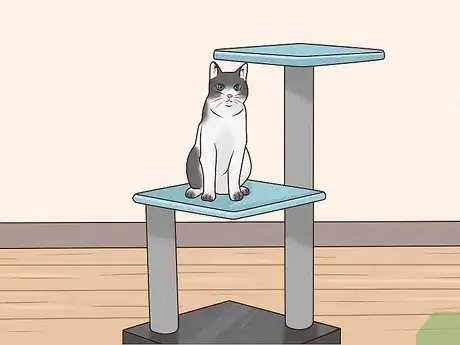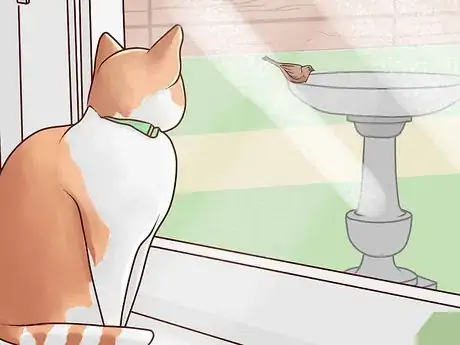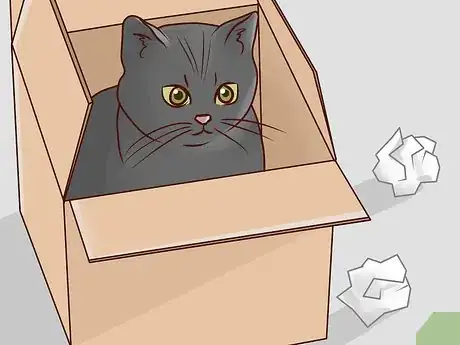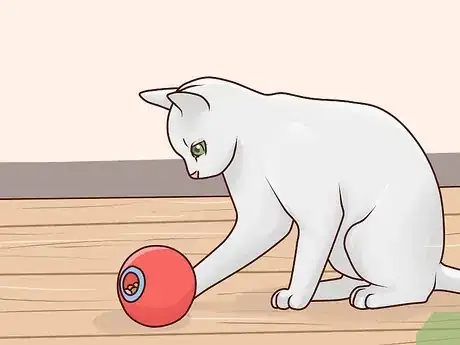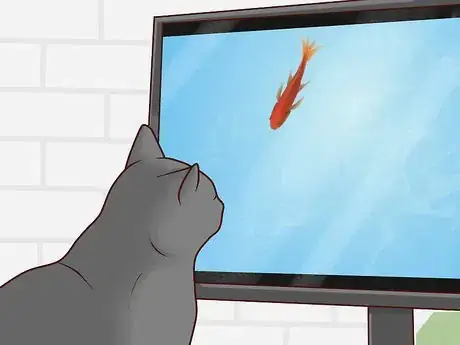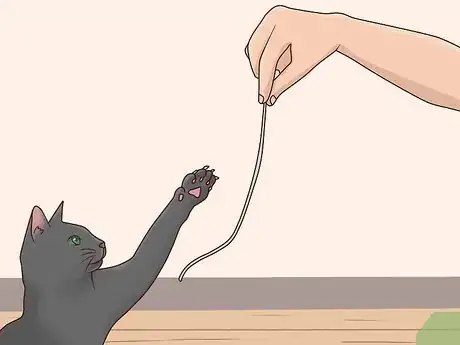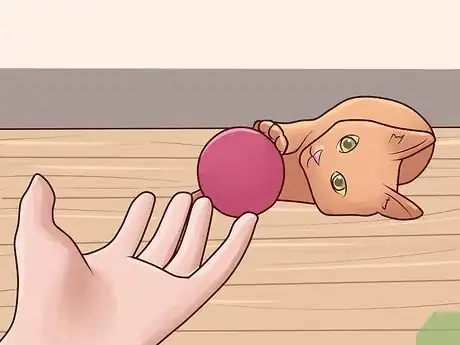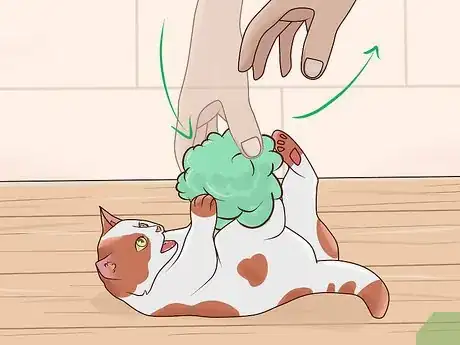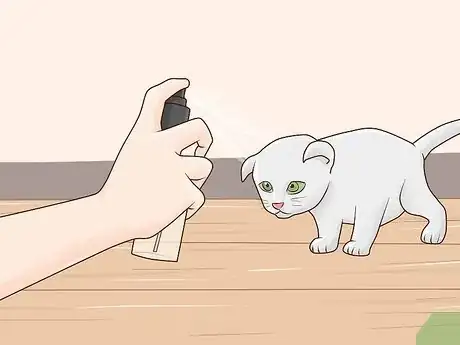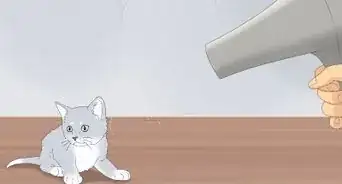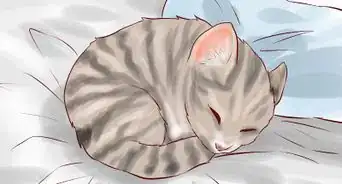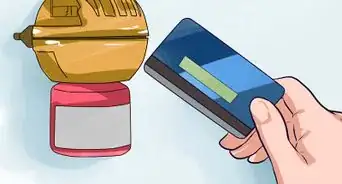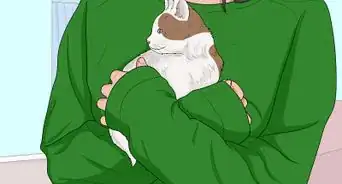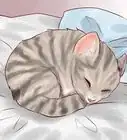This article was co-authored by Rita Reimers and by wikiHow staff writer, Christopher M. Osborne, PhD. Rita Reimers is a Cat Behavior Expert and a Co-Founder of Cat Behavior Alliance, a cat behavior consulting service. With over 30 years of experience as a multi-cat owner and cat rescue worker, Rita specializes in helping people better understand cats and find solutions to behavior issues. She received a BS in Computer Science and Personnel Relations Management and studied at the Animal Behavior College. Rita co-hosts a radio show on Pet Life Radio, “19 Cats and Counting,” and co-hosts a YouTube series, “Let’s Talk Cats.” She is also the co-author of the cat behavior blog, “Kitty Korner” for Litter Genie. Rita also writes for “A New Cattitude” for Catster Magazine, and is a contributor to be.Chewy.com. She is a supporting member of the International Association of Animal Behaviorists (IAABC).
This article has been viewed 13,464 times.
Kittens are cute little bundles of energy that crave attention, distraction, and playtime. During your shared playtimes, use toys that play into feline hunting instincts while also training your kitten not to attack your hands and feet. When you’re not available for play, provide a range of toys, treats, and sources of visual stimulation for your little feline friend. As an added bonus, many of these same techniques will work just as well when your cat is fully grown!
Steps
Providing Home Entertainment
-
1Buy or make a “kitten condo” for your little feline’s enjoyment. A good kitten condo should have a range of tunnels, platforms, perches, scratching posts, and other entertainment options. If you’re buying one, make sure it’s designed for kittens, not adult cats—the height, size, overall design, and accessories may vary.[1]
- Alternatively, you can make a kitten condo from materials like plywood, cardboard, and carpet remnants. Search online for design ideas, but once again make sure that the design is intended for kittens, not adult cats.
-
2Set up accessible perches at unobstructed windows. Cats of all ages love basking in sunny windows, watching the world go by! Choose at least one window that’s free of draperies, blinds, or cords, and that your kitten can safely access from the kitty condo or furniture like a couch. Ideally, the window should also overlook an active area and get some daily sunshine.[2]
- If possible, set up at least 2-3 different “kitty windows” with different views. For a kitten, changing window perches is like changing TV channels!
Advertisement -
3Draw outdoor animals into view of the window perches. Kittens love watching other animals in action, due both to their innate sociability and hunting instincts. Birds, squirrels, chipmunks, and other small creatures are particularly welcome sights for kittens. Try putting an animal feeder or birdbath near the window where your kitten hangs out.[3]
- If you’re not interested in drawing wildlife to your yard, put moving yard ornaments—such as flags or windmills—near the window to add visual interest.
-
4Leave cardboard boxes and handle-free paper bags lying around. Small cats, like small kids, often enjoy the cardboard box more than the item that came in the box! Leave a few open boxes here and there, as well as paper shopping bags that don’t have handles attached. Your kitten will have more fun than you might expect.[4]
- Bag handles present a strangulation hazard. Cut them off of any paper bags before using them. Never use plastic bags.
- Try adding some crumpled up paper or kitten toys in the boxes and bags.
- Move the boxes and bags to different spots every so often.
-
5Scatter food-dispensing toys in different locations. You can find a wide range of food-dispensing cat toys at pet stores and online. Some, for example, look like plastic eggs with small holes that release bits of food when jostled by a kitten. Just make sure the toy is marketed as kitten-appropriate and that you put kitten food into it.[5]
- As with bags, boxes, and other cat toys and distractions, move the food dispensing toys to different spots each time you refill them.
-
6Maintain a real, artificial, or digital aquarium. This is one stereotype that’s definitely true—cats love watching fish in an aquarium! If taking care of both a kitten and a fish tank isn’t for you, though, look into plug-in faux aquariums with moving “fish” that look life-like enough to fool your kitten.[6]
- Alternatively, turn your TV or computer monitor into a 2-dimensional aquarium. Search online for streaming videos or apps that show an aquarium setting, or another kitten-friendly view like small woodland creatures.
Playing with Your Kitten
-
1Aim for 3-4 daily play sessions, but don’t force playtime. Most kittens love to initiate playtime, so it usually isn’t a problem to fit in at least 4 play sessions lasting 5-15 minutes apiece. That said, it’s not a bad idea to initiate at least 1-2 daily play sessions yourself, so that your kitten learns to respond to your leadership.
- If your kitten shows no interest in playing when you try to initiate it, don’t try to force the issue. Simply give it another attempt later on.
- Forced playtimes may train your kitten to see play as a chore or even a punishment.
- If your kitten is chasing after you, lunging towards you, or just won’t leave you alone, assume it’s playtime!
-
2Use “catch” and “fetch” toys that you don’t have to hold. While kitten playtime should be fun, there is also a training aspect to it. Kittens, especially those separated from their mothers and siblings at a young age, must learn not to scratch and bite their playmates forcefully during play. As part of this training, use toys that provide some distance between the kitten and yourself.[7]
- A faux “fishing pole” with a soft toy at the end of the string is a classic and great option, since it keeps your hands away from the actual toy. Tying a toy to a string yourself accomplishes the same goal.
- Or, use small plush kitten toys that you can toss and have your kitten chase. Don’t expect your kitten to fetch the toy and bring it back to you, though!
- Due to the risk of strangulation, put away any toys with attached strings whenever you're not actively playing with or observing your kitten.
-
3Rub a “wrestling” toy against your kitten’s belly, then let it go. As part of their hunting instinct, kittens like to clamp their bodies around small plush toys and “wrestle” them with their claws and teeth. To encourage this behavior, rub the toy gently against your kitten’s belly when it’s lying on its side during playtime, then withdraw your hand as soon as your kitten starts to clamp down on the toy.[8]
- If your reflexes aren’t quick enough to pull your hand away before your kitten clamps down on it, look for a soft kitten toy attached to the end of a stick.
-
4Train your kitten not to attack your hands or feet. If your kitten does bite or claw your hands or feet during playtime, respond either by withdrawing attention or offering mild correction. Base your response on what you feel most comfortable doing and what your kitten seems to respond best to.
- To withdraw attention, stop your play behavior for several seconds and ignore your kitten. Then, offer an alternative, such as a toy.
- For mild correction, say a specific cue word like “no” in a calm but clear voice. At the same time, spray your kitten with either a can of compressed air (the kind used to clean computer keyboards) or a spray bottle filled with water and a few drops of white vinegar. Then offer an alternative.
- Don’t spray your kitten directly in the face with the compressed air or water bottle. Keep the can or bottle at least 12 in (30 cm) away and spray in your kitten’s general vicinity.
- Try not to play with your cat using your hands, as this encourages biting. Remember—hands are for petting, toys are for playing!
-
5Reward good play behavior, don’t punish bad play behavior. After withdrawing attention or offering mild correction, remember to quickly give an alternative. As soon as your kitten latches onto the toy alternative, offer a clear verbal praise cue—such as an enthusiastic “good kitty!”—and resume playtime.[9]
- Never use physical punishment. Your kitten will be terrorized and possibly confused, since the punishment may seem like part of playtime.
-
6Protect your hands with a scent or taste your kitten won’t like. If training is a struggle and your hands (and maybe feet) are full of tiny tooth and claw marks, make them less appealing to your kitten. Before playtime, dunk your hands in a bowl with roughly 10 parts water to 1 part either hot sauce or white vinegar. Kitty will steer clear of your hands after that![10]
- Make sure not to rub your eyes without washing your hands first!
References
- ↑ https://www.humanesociety.org/resources/10-tips-keep-your-cat-happy-indoors
- ↑ https://www.humanesociety.org/resources/10-tips-keep-your-cat-happy-indoors
- ↑ https://www.petfinder.com/cats/cat-care/entertainment-for-cats-5-ways-to-keep-kitty-happy/
- ↑ https://www.humanesociety.org/resources/10-tips-keep-your-cat-happy-indoors
- ↑ https://www.petfinder.com/cats/cat-care/entertainment-for-cats-5-ways-to-keep-kitty-happy/
- ↑ https://www.petfinder.com/cats/cat-care/entertainment-for-cats-5-ways-to-keep-kitty-happy/
- ↑ https://www.bluecross.org.uk/pet-advice/how-to-play-with-your-kitten
- ↑ https://www.humanesociety.org/resources/teach-your-kitten-how-play-nice
- ↑ https://www.bluecross.org.uk/pet-advice/how-to-play-with-your-kitten
